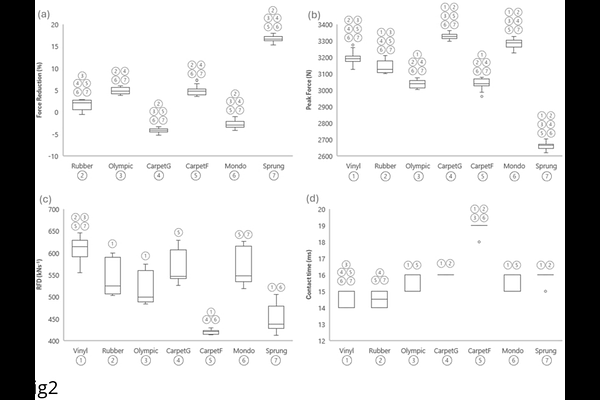The influence of common testing floor surfaces on force plate data: implications for standardisation

The influence of common testing floor surfaces on force plate data: implications for standardisation
Smith, L.; Jones, P.
AbstractForce plate testing is commonly used to assess athlete performance, however there is no research into the effect the surface underneath the force plate has on derived variables. The aim of this study was to investigate whether different surfaces underneath a force plate would elicit differences in derived force plate variables using a mechanical testing device. A mechanical testing device was used to assess force reduction, peak force, rate of force development (RFD) and contact time across seven common testing surfaces: vinyl, rubber, Olympic lifting platform, ground (CarpetF) and first floor (CarpetF) carpet, Mondo track and a sprung gymnasium floor (Sprung). Significant differences in force reduction, peak force, RFD, and contact time were found between flooring conditions (p < 0.05), with large to extremely large effect sizes. Sprung flooring exhibited the highest force reduction and lowest peak forces, while CarpetF demonstrated the lowest RFD and longest contact time. These findings highlight the flooring surface underneath the force plate during testing significantly influenced derived variables. Practitioners should exert caution and consideration to force plate testing location and advocate standardisation in flooring surface in order to ensure consistent and accurate results.